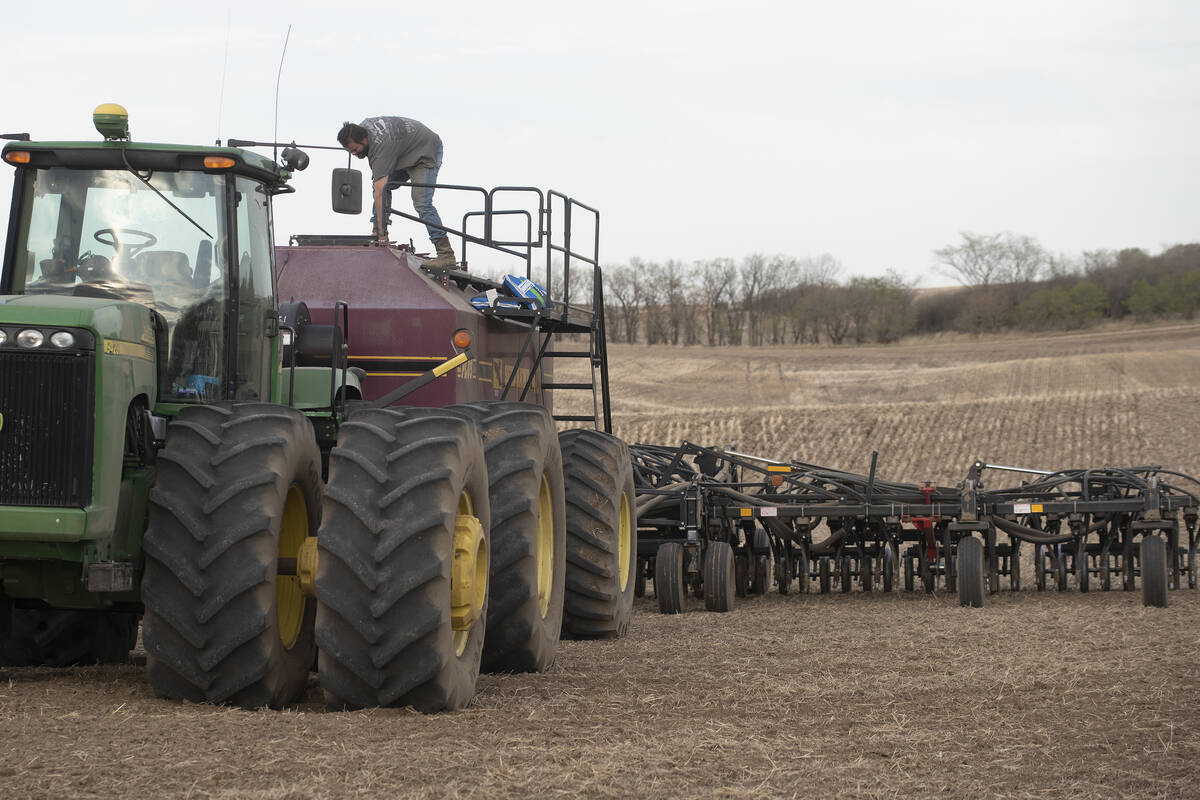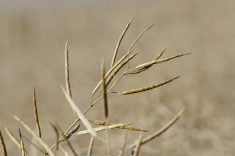Most Manitoba canola producers weren’t tallying up the list of production problems they faced last year, but Canola Council of Canada regional agronomist Kristen Phillips did. There were 23 to be exact, everything from excess moisture, late seeding, drought, frost, stressed plants, disease and insects.
The cool, wet spring and a hot, dry summer led to favourable conditions for blackleg, she told farmers attending St. Jean Farm Days. An annual canola disease survey showed that the incidence and prevalence of diseases such as blackleg is increasing every year, especially in Manitoba.
Read Also

Nutrien pays farmers for efficient nitrogen
Nutrien’s Sustainable Nitrogen Outcomes (SNO) program pays Prairie farmers to limit nitrogen loss and, therefore, fertilizer-related greenhouse gas emissions.
Yet only two hands were raised when Phillips asked how many farmers scouted for blackleg in 2011.
“We need to get you out and scouting for blackleg,” said Phillips, emphasizing that rotation is important because blackleg lives on canola stubble for 18-20 months.
“Scout early, scout often,” she said.
Sprayed unnecessarily
Phillips said Manitoba canola growers had the usual visits from the bertha army worm and diamondback moth, but also from the imported cabbage worm. She said that it’s often mistaken for the bertha armyworm, and that some farmers sprayed unnecessarily for the insect.
“It was such a visible moth that everyone thought it was a huge issue,” said Phillips.
The imported cabbage worm is the larvae of the cabbage butterfly, which has black-tipped wings with black dots. Imported cabbage worms are green and have a lemon-yellow stripe down the middle of their back on the dorsal side. They grow to about 30 mm and are covered with short hairs, giving them a velvety appearance. Cabbage worms look more like diamondback moth larvae than bertha army worms, but are more docile than diamondback moth larvae and less spindle shaped.
Phillips said that as long as there is good vegetative growth, the imported cabbage worm will feed mostly on leaves and it is not usually economical to spray them.
“The imported cabbage worm larvae in the moth stage and the larvae stage, do not do any economic damage to canola. So they are not a concern,” Phillips said.
Clubroot watch
Phillips said that while clubroot is not a problem in Manitoba yet, the disease is moving east. In recent years Alberta has had several outbreaks, and there were two confirmed cases in Saskatchewan in 2011.
Phillips said that sanitation is important, including kicking the dirt off boots and farm equipment when going from farm to farm, and field to field and pressure washing equipment at the beginning and end of every season and after being in a strange field.
“Removing the soil (from equipment) from farm to farm is really good practice.”














